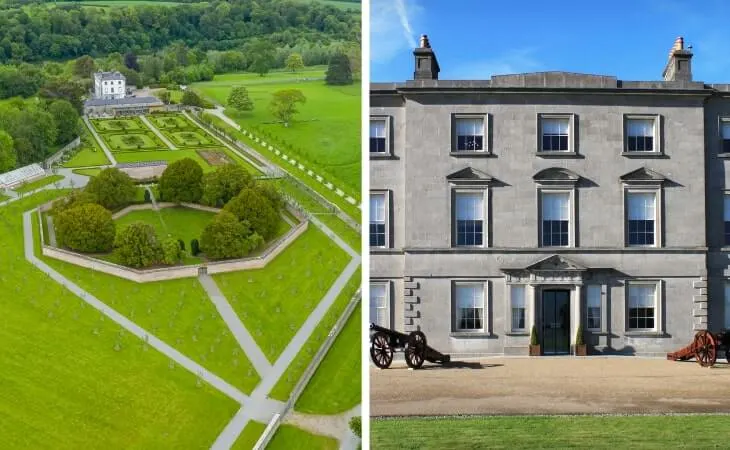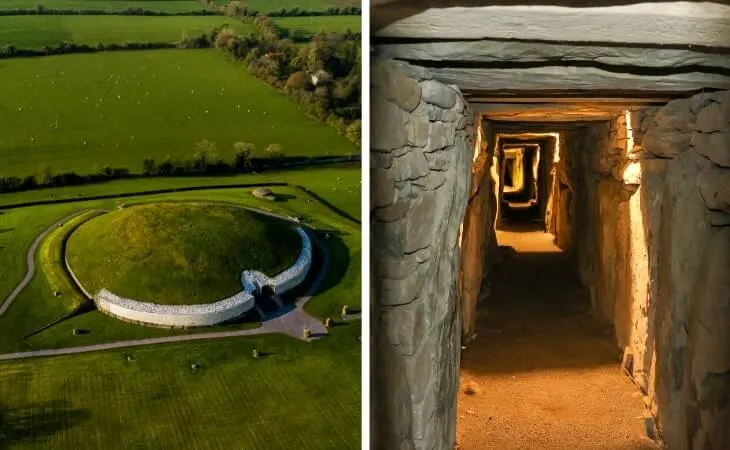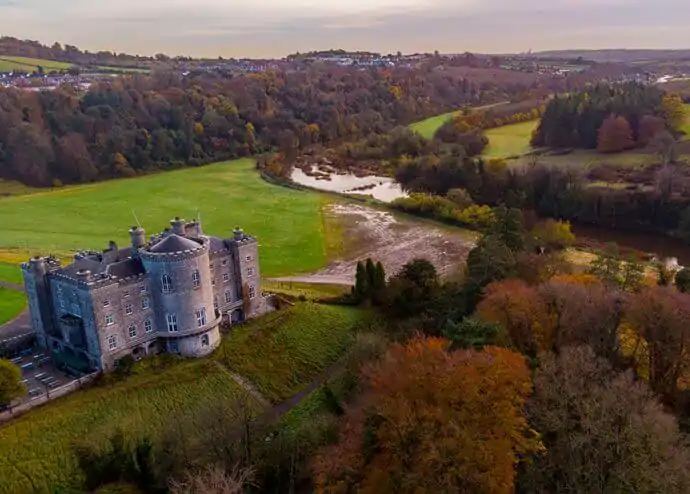If you’re looking for things to do in Louth, a visit to the Old Mellifont Abbey is well worth considering.
And, as it’s one of the stops on the incredible Boyne Valley Drive, there’s plenty to see and do a stone’s throw away.
Below, you’ll find info on everything from the History of the Old Mellifont Abbey to where to get parking nearby. Dive on in!
Some quick need-to-knows about the Old Mellifont Abbey

Photos via Shutterstock
Although a visit to Old Mellifont Abbey is fairly straightforward, there are a few need-to-knows that’ll make your visit that bit more enjoyable.
1. Location
The Old Mellifont Abbey is located in a serene location at Tullyallen. It’s a 10-minute drive from both Slane and Drogheda and 15-minute drive from Brú na Bóinne.
2. Opening hours
Managed by Heritage Ireland, the grounds of Old Mellifont Abbey are open daily from 10am to 5pm. From late May to late August the Visitor Centre is also open daily from 10am to 5pm. This includes an exhibition centre and guided tours of the abbey relics.
3. Parking
There is plenty of free parking at Old Mellifont Abbey (here on Google Maps). The site is fully accessible for visitors with disabilities.
4. Admission
Admission to the grounds of the Old Mellifont Abbey is free all year round. There is, however, a modest charge for access to the Exhibition in the Visitor Centre and guided tours. Admission costs €5 for adults; €4 for seniors and groups. Children and students are €3 and family tickets cost €13.
History of the Old Mellifont Abbey
The Old Mellifont Abbey is hugely significant as it was Ireland’s first Cistercian monastery. It was founded by St Malachy, the Archbishop of Armagh in 1142.
He was assisted for a short time by monks sent over from Clairvaux and the main abbey plan closely followed that of the mother church.
A place of worship that drew the crowds (and the gold!)
As was customary, many Celtic kings donated gold, altar cloths and chalices to the abbey. It soon had over 400 monks and lay brothers.
The Abbey hosted a synod in 1152 and prospered under Norman rule at that time. By the early 1400s, it controlled over 48,000 acres.
Other notable events
The abbot wielded considerable power and influence, even having a seat in the English House of Lords. This all came to an end with Henry VIII’s Dissolution of Monasteries Act in 1539. The beautiful abbey building passed into private ownership as a fortified house.
In 1603, under the ownership of Garret Moore, the abbey was where the Treaty of Mellifont was signed to mark the end of the Nine Years War. The property was also used by William of Orange as a base in 1690, during the Battle of the Boyne.
Things to see and do at the Old Mellifont Abbey

Photos via Shutterstock
One of the reasons that a visit to Old Mellifont Abbey is so popular is due to the volume of things there is to have a look at.
1. The original gate house
Managed by Historic Ireland, visitors are immediately drawn to the wonderful buildings that remain on this historic site. The original gatehouse is all that remains of the original three storey tower. It housed an archway through which access was granted to the abbey itself. This defensive structure would have had a basement in case it came under attack.
The tower stands close to the river and nearby buildings would have included the abbot’s residence, a guest house and a hospital.
2. The ruins
You have to marvel at these architectural features that were hand-built and have lasted almost 900 years. From the present entrance gate, visitors can look down at the foundations and layout of this once great abbey complex.
Close to the gate, the abbey church ran east-west and was 58m long and 16m wide. Excavations show that the abbey was constantly expanding its buildings over the 400 years that it was a working abbey. The Presbytery, transept and chapter house were probably remodelled between 1300 and the early 1400s.
3. The chapter house
The chapter house was built on the east side of the cloister and was an important hub for meetings. You can still see remnants of the vaulted ceiling.
From this hub, other rooms were accessed. These would have been store rooms, the kitchen, the dining refectory, warming room and the bursar’s office. On the upper level were the monks’ dormitories.
4. The cloister garth and lavabo
Beyond the great church was an open-air courtyard enclosed by cloisters – a covered passageway on all sides that connected all the main buildings together.
One of the highlights inside the cloister garth is the octagonal lavabo (for ritualistic hand washing) with its delicate arches. Standing two stories high on the green area, it was a remarkable feat of engineering for its time with four arches still intact showing its beauty.
Things to do near the Old Mellifont Abbey
Although located in Louth, Old Mellifont Abbey is a stone’s throw from many of the best things to do in Meath.
Below, you’ll discover a mix of things to see and do, in both Louth and Meath, a short drive away.
1. Battle of the Boyne Visitor Centre (12-minute drive)

Photos via Shutterstock
Located in Oldbridge, the Battle of the Boyne Visitor Centre marks the site of this important battle in 1690. Learn more about the significance of this historic battle between King William III and James II through the displays. Try to visit when costumed guides put on exciting re-enactments. There are some pleasant gardens, a natural amphitheatre and a coffee shop.
2. Drogheda (12-minute drive)

Photos via Shutterstock
There are lots of ancient sites in the historic town of Drogheda with its ancient gates, city walls, battle sites and museums. Pop into St Peter’s Church for a look around and see the shrine of St Oliver Plunkett who was martyred in 1681. You can also visit the impressive St Laurence’s Gate with its arched entrance into the town. The Millmount Museum and Martello Tower are worth a tour.
3. Brú na Bóinne (15-minute drive)

Photos via Shutterstock
Visit the Brú na Bóinne Visitor Centre with its informative state-of-the-art displays. Take a guided tour around the exteriors of Newgrange and Knowth and learn about nearby, Dowth, too! This World Heritage Site has several passage tombs dating back over 5,000 years.
4. Slane Castle (15-minute drive)

Photo by Adam.Bialek (Shutterstock)
In the centre of a glorious 1500-acre estate, Slane Castle is a stunning castle on the banks of the River Boyne. Home to the Conyngham family since 1703, visitors can now take a guided tour. Learn about the family history and listen to colourful tales of world famous rock concerts hosted on the estate. Visit the Hill of Slane when you’re finished.
FAQs about visiting Old Mellifont Abbey
We’ve had a lot of questions over the years asking about everything from ‘Who lived in Mellifont Abbey?’ (Sir Garrett Moore) to ‘When was Mellifont Abbey built?’ (1142).
In the section below, we’ve popped in the most FAQs that we’ve received. If you have a question that we haven’t tackled, ask away in the comments section below.
Is Old Mellifont Abbey worth visiting?
Yes! Especially if you have an interest in Ireland’s past. There’s plenty of history to soak up here, and it’s a short drive from many other attractions.
Do you have to pay into Old Mellifont Abbey?
Old Mellifont Abbey is free to enter. However, you’ll have to pay into the visitor centre and to do the guided tours (info on both above).
